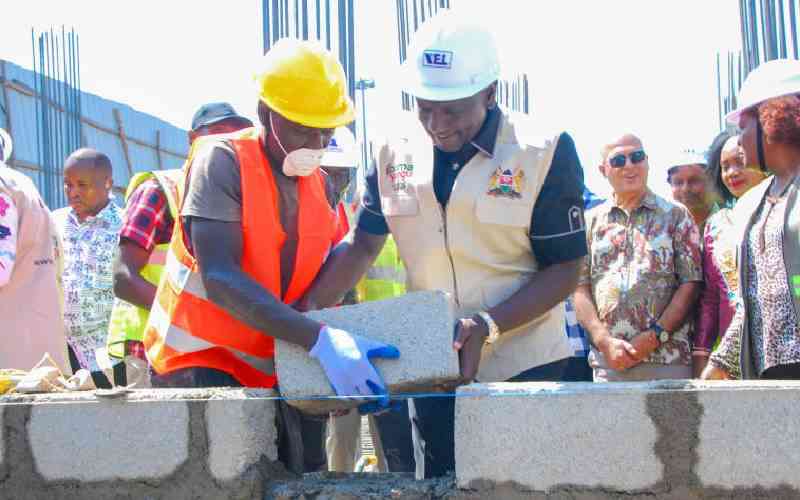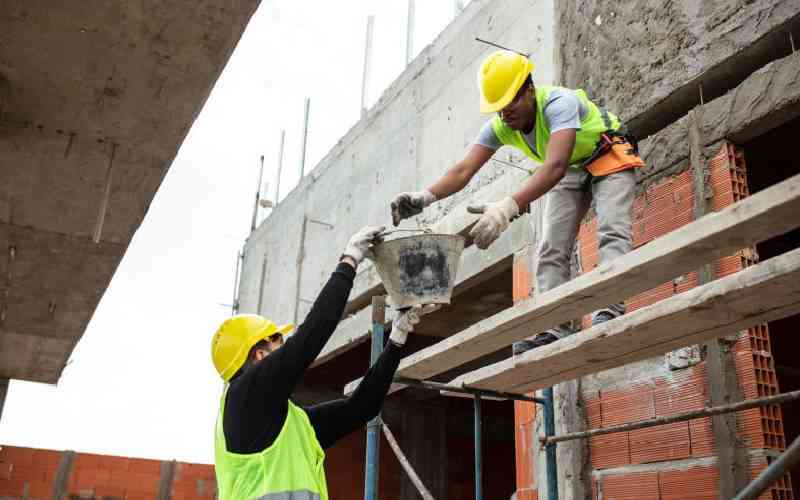
A housing finance Credit Guarantee Fund (CGF) that de-risks end-user borrowers, especially the low and middle-income segment, is one of the key opportunities in affordable housing outlined in the 14 edition of the Africa Housing Year Book 2023.
The Year Book prepared by the Centre for Affordable Housing Finance in Africa (CAHF) also cites rent-to-own and alternative credit score models as the other specifics that would benefit low and middle-income homeowners.
These are the opportunities that the continental affordable housing think tank has brought to the fore after analysing the country's situation in the year which informed Kenya's profile.
The Africa Housing Year Book 2023 has insights and contains profiles of other African markets.
The think tank also notes gaps in Kenya's housing finance statistics.
The missing links include payment history and house desires.
The November 2023 document states that Kenya faces a stark annual housing deficit of 200,000 units, exacerbating the existing shortage.
"While the demand stands at 250,000 units, developers construct merely 50,000 units annually, with the low-income group severely underserved, allocated only two per cent of the constructed units," it reads.
As such, homeownership rates in urban centres stand at 21.3 per cent, trailing the national average of 61.3 per cent while 78.7 per cent of urban dwellers rent.
The low and middle-income-driven market that Kenya has is confirmed by the 5.5 per cent unemployment rate, which the think tank says underscores the significance of the informal sector as the primary source of employment.
According to the think tank, there exists a myriad of opportunities in Kenya in the affordable housing space and if some interventions are made, the market can be expanded to cover the low and middle-income.
Sprouting of urban centres where universities are present is one of the opportunities as this brings demand for student accommodation where investors can offer stable occupancy rates and diverse tenant bases.
"Rent-to-own options empower low and middle-income families by allowing them to rent with the potential to purchase properties at discounted rates," says CAHF in the yearbook.
To increase the accessibility of housing finance for people with low and middle incomes, development partners and financial institutions can investigate innovative housing finance models, such as mortgage-backed securities and housing microfinance, the report says.
"Equally, establishing a housing finance Credit Guarantee Fund (CGF) that de-risks end-user borrowers, especially the low- and middle-income segment will make credit more accessible," says CAHF.
Banks, Saccos, microfinance banks (MFBs), and microfinance institutions (MFIs), it states, should develop and offer housing finance solutions and products tailored to match the needs of most low-income earners, who develop homes incrementally as financing becomes available.
"Similarly, alternative credit scoring models could be explored in assessing low-income borrowers using innovative credit scoring models based on their income, expenditure, savings, and other financial behaviours," CAHF proposes.
Other initiatives on the table include incentives for lenders like tax breaks, and supporting microfinance institutions and cooperatives to provide affordable housing finance, amongst others.
As noted earlier, a major challenge towards affordable credit that would largely benefit low and middle-income segments stems from a lack of adequate data.
"There are gaps in Kenya's housing finance statistics with limited knowledge of housing demands and preferences across various population categories. Data on household size and composition, income levels, payment history, affordability criteria, and housing desires are among those that are inadequate," the think tank says.
Buying property
The report states that demand for buying property stands at 45.1 per cent against the demand for rent at 35.1 per cent, while the demand for stand-alone properties and apartments stands at 27.6 per cent and 26.7 per cent, respectively, as of August 2023, implying Kenyans' affinity towards home ownership.
It notes that social housing targeting low-income earners is the most sought-after type of affordable housing.
CAHF says the cost of the cheapest newly-built housing unit by a private developer stands at Sh1 million ($7,110.93) - the equivalent of a one-bedroom apartment in Pangani, Nairobi that is already highly subsidised.
"Kenyans spend up to 40 per cent of their household income on housing. Notably, the average mortgage size stands at Sh9.4 million ($66,842) in 2022," the document says.
CAHF says green initiatives like water harvesting, waste management, and energy-efficient systems improve sustainability, and lower operational costs while increasing property value. This can play a role in the overall cost of housing.
"The use of digital models and prefabricated materials could be enhanced to reduce cost, construction time and environmental impact," it adds.
 The Standard Group Plc is a multi-media organization with investments in media platforms spanning newspaper print
operations, television, radio broadcasting, digital and online services. The Standard Group is recognized as a
leading multi-media house in Kenya with a key influence in matters of national and international interest.
The Standard Group Plc is a multi-media organization with investments in media platforms spanning newspaper print
operations, television, radio broadcasting, digital and online services. The Standard Group is recognized as a
leading multi-media house in Kenya with a key influence in matters of national and international interest.











